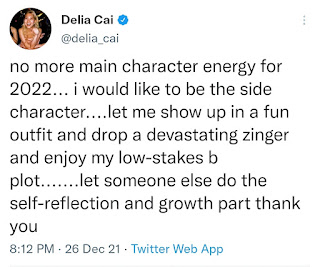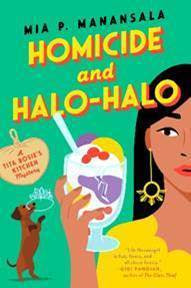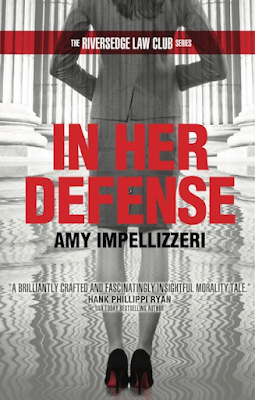RHYS BOWEN: The other day on Jungle Reds I wrote a piece about the new book I am writing and how I am trying to get to know the characters. Creating a character is a mysterious process. For me, once they open their mouths and speak I seem to know who they are. I get a visual image. Something to build on. But how does one ‘create’ a character? I wish I knew. It’s like a good recipe: we take a brief encounter with a woman at the bank, add a touch of Aunt Alice, something we saw on TV, stir together and hopefully a new character is born.
It's interesting to wonder how often we use real people in our books. I hear Sue Grafton started to write mysteries so she could kill her ex-husband on paper. Ian Rankin tells a funny story about his father, who was convinced that every character Ian writes is based on him.
“Is that one me?” he’d say.
Ian would answer, “No, dad. That’s a nun.”
But I suspect we do delve into our personal experience and base our characters on real people. I deliberately modeled Georgie’s grandfather in the Royal Spyness books on my own father: a kind, gentle man from a humble background. Someone you could run to and feel safe with. Exactly what I wanted in Georgie’s life. But unlike Georgie’s grandfather , my father would not have been ill-at-ease among his social betters. He chatted several times with the old Queen Mother. In fact he chatted with anyone he met.
Mrs. Williams in the Constable Evans books was modeled on my Welsh great aunt. A fabulous cook who constantly wanted to feed us up. Several other members of that cast were people I’d met in Wales.
I’m trying to think whether I’ve ever killed off someone in my books I would have liked to get rid of in real life? I know my old headmistress from school features in several books—any cold, spiteful, bossy teacher you see in my stories—that’s her. But I don’t think I’ve actually killed her.
I have noticed that a couple of leading males in my stories are good-looking men with Irish backgrounds and dark hair. Interesting that. My husband, with one Irish grandfather, definitely has the black Irish look. It wasn’t intentional, merely subconscious.
And I realize now that my books are peopled with real historical characters: the royal family, Noel Coward, Winston Churchill, Queen Victoria... but I was thinking more about people from our own lives.
So Reds, where did your characters come from? Have you deliberately used real people? Killed off real people?
JENN McKINLAY: In my very first mystery I killed off the Hub’s boss. It was delightfully therapeutic for the both of us. My victims do tend to be real people who annoy me even though I may not know them personally. A certain celebrity that I find grating, a cousin that is trying, or a fellow PTO member who won’t shut up so the meeting can blessedly end, that sort of thing.
But my protagonists are mashups of the favorite people in my life, so it will be a friend’s delightful humor added to another friend’s amazing head of hair, grounded by my mom’s intelligence. Probably, that’s why I’m so fond of them all. None of it is planned out but rather the character grows into these attributes organically or as needed. LOL.
JULIA SPENCER-FLEMING: I have definitely used real people in my books, usually in small roles and with great affection. Clare’s snappy secretary Lois? My mom, Lois. Investigative reporter Ben Beagle? Was an editor for the Livingston County News when I met him, and is now an editor at The Daily News serving three western NY counties. His name really is Ben Beagle and he really does always wear Snoopy ties. My sister Barbara and brother-in-law Daniel are recurring characters (and have gotten to the point where they’re dating in the books!)
My rules, as it were, for including real people is that they have minor roles. Ben Beagle comes on stage, annoys Russ, who hates reporters just a little less than he hates lawyers, asks some pointed questions that move the plot along, and then exits. Trying to make a reality-based character grow and change within a novel is a recipe for disaster, I believe. You’ll wind up trying to stuff your organically-grown person into a real-person suit, to the detriment of both.
HALLIE EPHRON: I do not, for the most part, base my characters on real people. Though the old woman in THERE WAS AN OLD WOMAN is how I imagine myself if I persist into my 90’s. And I did kill my father off in the opening scene of NIGHT NIGHT, SLEEP TIGHT. I like to think he’d have gotten a kick out of it. And, now that I think about it, my mother inspired characters in several books as well. My next door neighbor’s dog Phoebe, an ornery ederly pooch with a grizzled muzzle who grunt-snorted about, is in NEVER TELL A LIE. In the book, Phoebe saves the main character’s life. But when they made that book into a movie, Phoebe turned into a little white french poodle. And they killed her. Which infuriated me.
HANK PHILLIPPI RYAN: Well, now it can be told. Charlotte McNally’s mother is precisely my mother, gorgeous and hilarious and brilliant, and whose favorite admonition to me was “I’m not criticizing, I’m just observing.”
But she was, frankly, not too happy about her portrayal at first, putting it mildly, until I convinced her to read the whole book (Face Time) after which she called me, crying, to thank me for having written “a mother-daughter love story.” So all’s well that ended well.
SInce then, however, I have to say no one is anyone. Ever. Ever. There are a few, if I may quietly divulge, unpleasant judges who are portrayed with tiny bits of insider knowledge just to make my lawyer-husband Jonathan happy. (And by unpleasant, I mean judges who have ruled against him.) But they will never recognize themselves.
LUCY BURDETTE: I guess I’m an outlier here, because my Key West books are chock full of real people. Some of them play smaller parts, like the cat man, and others have bigger roles such as Lorenzo, the tarot card reader, and Martha, the chef. Martha burst out in A DEADLY FEAST and plays a big part in A DISH TO DIE FOR, coming in August. She’s also in the book I’m writing (slowly) now. The only time I made an egregious error was when someone bid on a character name and I turned him into a possible child molester. That was not kind, as our daughter says to her daughter…
DEBORAH CROMBIE: In my very first novel I modeled a character I really like after my grandmother, but of course in the writing she became her own person, as characters tend to do. Since then, I don't think I've ever used a specific person, but I'm sure that people I know creep into all of my characters because that's where we draw our experience from. I think it would be fun to use real people the way Lucy does, but my books don't seem to lend themselves to it.
Rhys: Okay, writer friends. Who has killed a real person on the page? Used a family member? Did they recognize themselves?


































